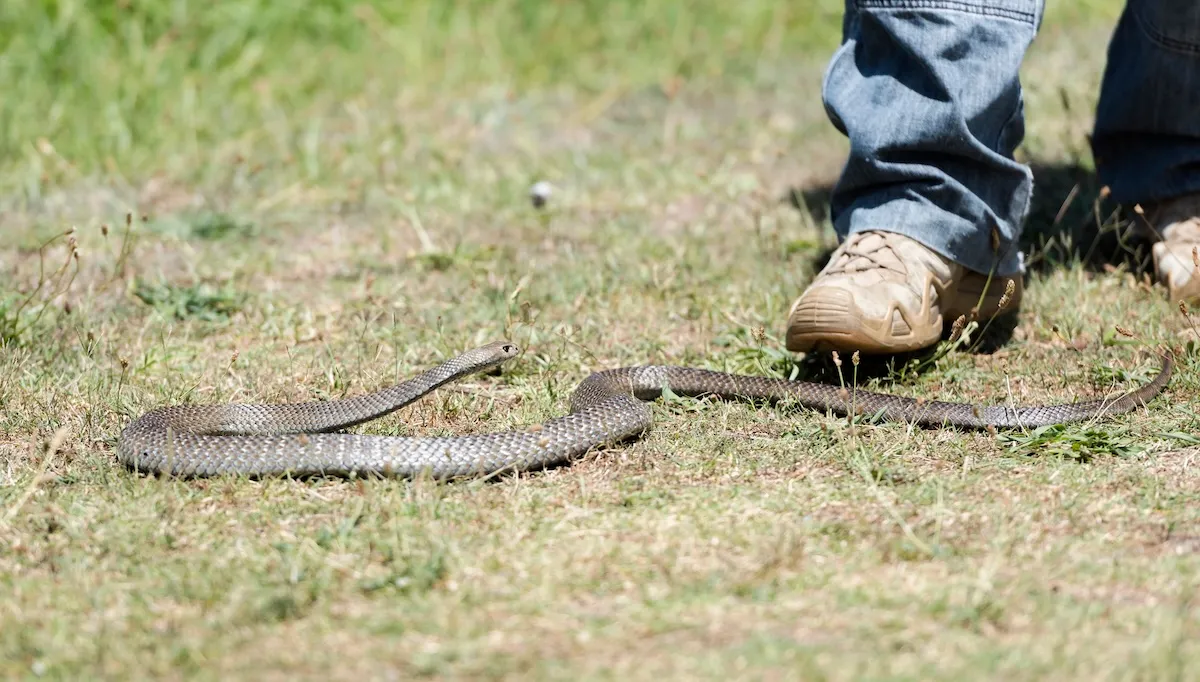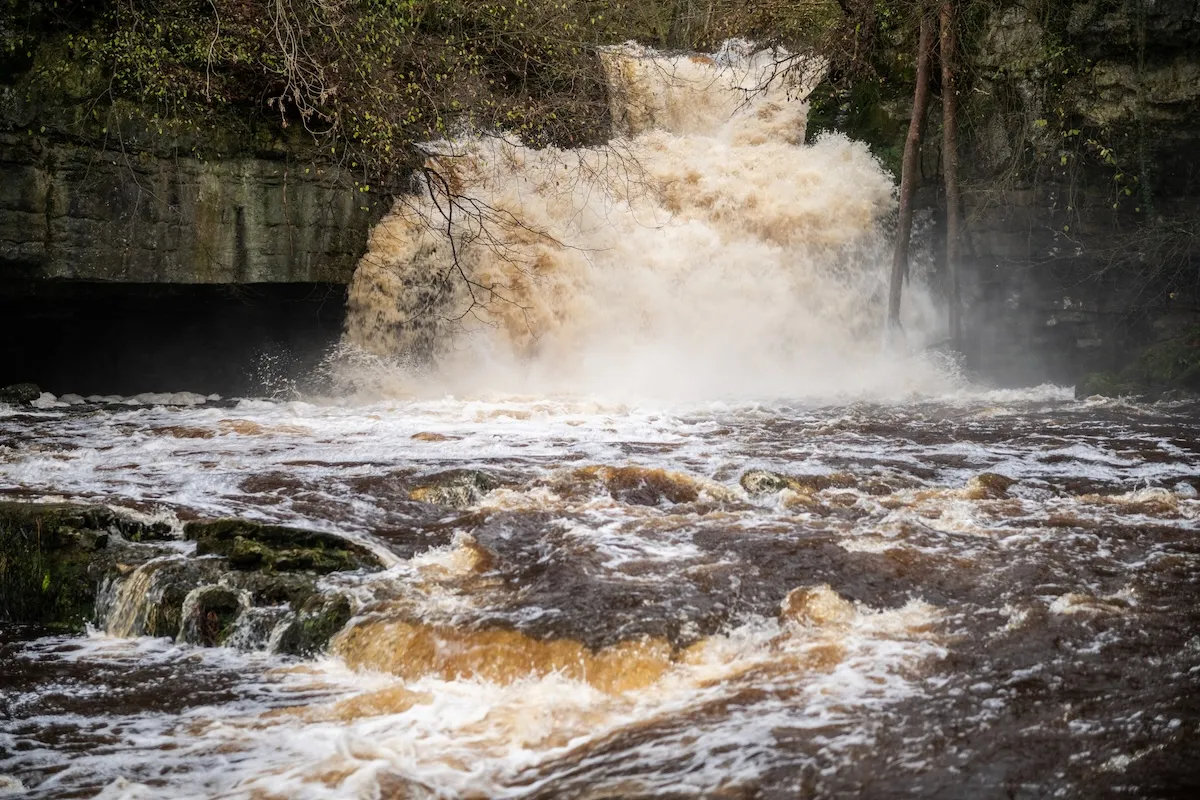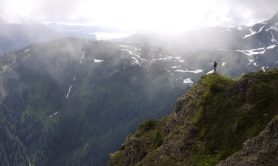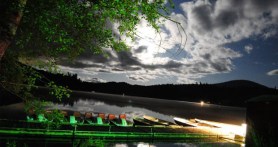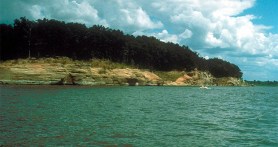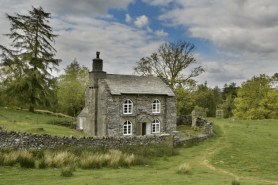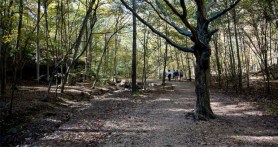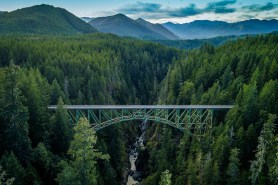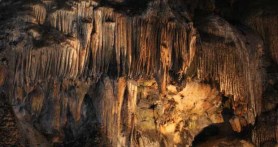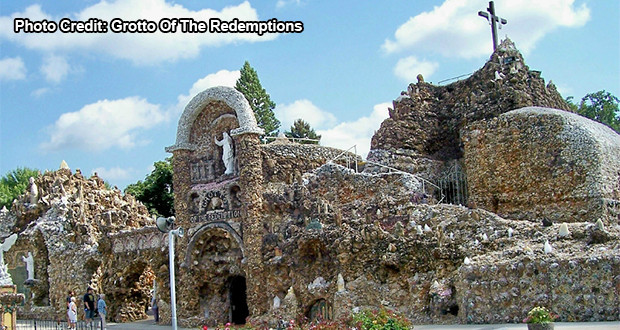

Videos by Outdoors
Camp Iowa: We’re talking with Mary today. She is the executive director at Grotto of the Redemption. Pretty excited about this particular interview today, because the Grotto of Redemption is very different from most of the interviews that we’ve done for regular campgrounds. So we have Mary today; how’s it going?
Mary: Good, great. How are you?
Camp Iowa: I’m doing good. I actually had never really read about Grotto of the Redemption. I feel like I’ve heard it before, but I hadn’t looked it up online. I started to read about it, and to be honest, it’s almost overwhelming. There’s the story and how much is going on there. For our listeners who maybe aren’t familiar, I know it’s quite the task to try to sum up what’s actually there, but if you could do that, that would be great.
Mary: The Grotto of the Redemption is sort of a compilation of about nine separate grottos all under one grotto, so to speak. It’s a beautiful – it’s like a monumental structure of ornamental rocks, I guess you would say. It covers an entire city block, and then we also have the park and the little lake that goes with it. But the grotto itself is just an amazing, amazing structure. There’s little grottos within the big grotto, and then you also get the Stations of the Cross.
The project was begun by one man, Fr. Dobberstein, and he came to West Bend, Iowa as a very young priest, and before he was ordained, he got very sick, deathly sick, in 1888. They told him he was going to die; he prayed and prayed, and he prayed to Blessed Virgin Mary and said, “If you heal me, I will build you a shrine.” He kept praying. Three weeks later, he was ordained and he was healthy. He had made this promise.
So then he gets his first assignment as a priest, and he comes here, and he’s young, no money, but he’s got this shrine he wants to build to keep his promise. He took the wet part of the land that he had here for his mission church, and he dug it out and made a little lake. He wanted to get people here so he could start to collect money and funds, so they would swim and fish in the lake because there was nothing else around here, and they would donate money.
He started buying up semiprecious rock and regular rock, and pretty soon he had enough rock to start his first shrine to Mary. Now, if you go to our website, you’ll see that this is more than just a little shrine.
Camp Iowa: Oh yeah.
Mary: Yeah. Then I think he just fell in love with the fact that he could do this. I mean, no one else could do what he did. What he ended up with is the biggest grotto in the world – the second biggest is in France – this is the biggest grotto in the world, right here in West Bend, Iowa.
Camp Iowa: It’s absolutely amazing. I was reading earlier today, there are over four million dollars’ worth of minerals and gems and precious stones that it’s built out of.
Mary: Yeah, they say now that the value of the grotto is almost half a billion dollars.
Camp Iowa: Whoa.
Mary: But it’s all embedded in the cement that shapes the grottos. “Grotto” is another word for “cave,” and these are like beautiful caves and caverns. It’s just amazing.
Camp Iowa: It’s amazing. I think when I was reading through today, what was the most amazing to me is any time someone displays – and it’s rare – any time someone displays that kind of long-term vision and is able to stick to it, it’s just mind-blowing. The way he laid a cement foundation first, knowing that it would be longer lasting and more stable once he started to build all of this. I didn’t know that first part that you mentioned, that he actually raised money for the grotto part of the project with a previous project.
Mary: Yeah, he had to line up funding before he could even start to buy rocks. People are surprised to find out that 75% of the rocks have been purchased. I think a lot of people assume that things were donated all the time, but he did purchase. I don’t have the number in front of me, but back in the day – and we’re talking about the ’20s and ’30s and ’40s – these train cars would come to West Bend and the townsfolk would – he had a great relationship with the townspeople, and they would help unload and bring the new rocks up to him. It’s quite a story.
Camp Iowa: It really is. It really is. The reason for this call is that there is actually a campground there.
Mary: Right. He had this vision of making it real accessible for people. He in fact wanted to entertain people, so he had the little lake, he had the campgrounds, and we have a west campground and a north campground. The north campground, you look at the lake and the grotto. The west campground, you don’t quite have the view, but that’s where we have the showers and a few more amenities, I guess you’d say. We’re fully electric, and with the dumping and the water and the showers and everything, we have all that. And then you just walk across the street and you’re in the grotto. It’s a great stop for people.
But I was starting to tell you that he wanted to make it even more entertaining, so he had this café that was open all the time and people would play cards and games, and then he actually had two black bears that had their own little grotto with a cage. [laughs] But those are long gone. But he just wanted to keep people here, which he did do, he succeeded in doing.
Camp Iowa: What kind of visitor do you see there, who stays in the campground?
Mary: We see a whole realm. We see the people who travel up north in the summer and go south in the winter. We have a lot of families. And then we have a lot of people who maybe are empty nesters and they came here when they were five and they hadn’t seen it for 40 years or 50 years, and they want to show it to their spouse. We have a lot of those types of visitors.
Camp Iowa: Do you have any repeat visitors? Do people come back year after year?
Mary: Yeah. In fact, I just talked to one yesterday. They’ve been coming once a week for 20 years.
Camp Iowa: Wow.
Mary: We get a lot of that. We’ve got a guy over there now that he has family ties to this community, but it’s like a month off every year. He camps here every year for a month. But just so your people know, it’s fun to just come here and meet the people who are visiting the grotto, who aren’t necessarily camping. I just was doing my statistics for August; we had people here from 40 states and from 12 countries.
Camp Iowa: That’s amazing.
Mary: Yeah. Just two days ago, I was giving tours, the 3:00 tour – and I do six a day – and the 3:00 tour I had a guy from Germany, two people from Arizona, Minnesota, and then two people from South Africa.
Camp Iowa: Wow.
Mary: It’s just fun.
Camp Iowa: And he inspired several other grottos to be built after he built that grotto there, too, from what I understand?
Mary: There was sort of a little bit of a grotto movement that caught on when people saw what he was doing. That hasn’t really been sustained, but he did go and help people start a few others. But I don’t know a lot about where those are located. I just know that this is the largest one, and the second largest one is in France.
Camp Iowa: Absolutely amazing. If you could describe the grotto in three words, what words would you choose?
Mary: Oh my. Boy… a gem of a campground. [laughs] Oh, that’s a really tough question.
Camp Iowa: That is a tough question, but that would be a four-word phrase, and we’ll accept that answer.
Mary: Okay. Obviously it has a religious theme, so people are inspired by that and that’s fine, because we get people who just want to meditate, and this is the perfect place to do that. It’s a perfect place if you’re a rock hound. The collection of rocks that we have in this one city block, we’re told that there’s nowhere else on earth that has this collection. We have everything. And we have the second largest amethyst in the world.
Camp Iowa: Wow.
Mary: Yeah, so it’s really fun if you’re into rocks. Even if you’re not into rocks, you are blown away by the beauty of the rock.
Camp Iowa: If somebody was going to stay there for several days, what are some other attractions in the area that might be worth checking out?
Mary: Right now, we have a really active historical society, and we work together and we send people over there and it’s a really neat – you can see a little sod house, and they just got more agricultural interests as far as the history of things around here. It’s very, very interesting. If you just drive about18 miles to the east, there’s the largest German POW museum in the United States, and that’s really interesting. And then we’re surrounded by about – 20 to 40 miles, there’s a whole series of lakes, lake recreation.
Camp Iowa: So plenty of hiking and different things of that nature.
Mary: Oh yeah, sure.
Camp Iowa: It sounds like a fun place to hang out, and if I ever come through that part of the country, I definitely will come in and check it out.
Mary: Oh, good, please do. If you go to Facebook – we had a crew from AOL who came through and they made a short little film clip, and then the History Channel did too. So we’ve gotten some attention that way, but I would like nationally more people to find out about us. I’m glad that you called.
Camp Iowa: Absolutely, and that will definitely help. We’ll get the word out to our visitors and we’ll put some links back to your page. When you said the AOL video, was that on your Facebook page?
Mary: Yes, it’s under Grotto of the Redemption.
Camp Iowa: Okay, we’ll check that out as well.
Mary: You probably have to scroll down a ways, because I re-posted it about a month and a half ago, I think.
Camp Iowa: I’ll find it.
Mary: Okay, good.
Camp Iowa: Thank you so much for taking some time out of your day, Mary. I’m sure you’re very busy with all the visitors down there.
Mary: I appreciate the call. Thank you so much.
Camp Iowa: All right, take care.
Mary: Take care, bye bye.
Camp Iowa: Bye.
